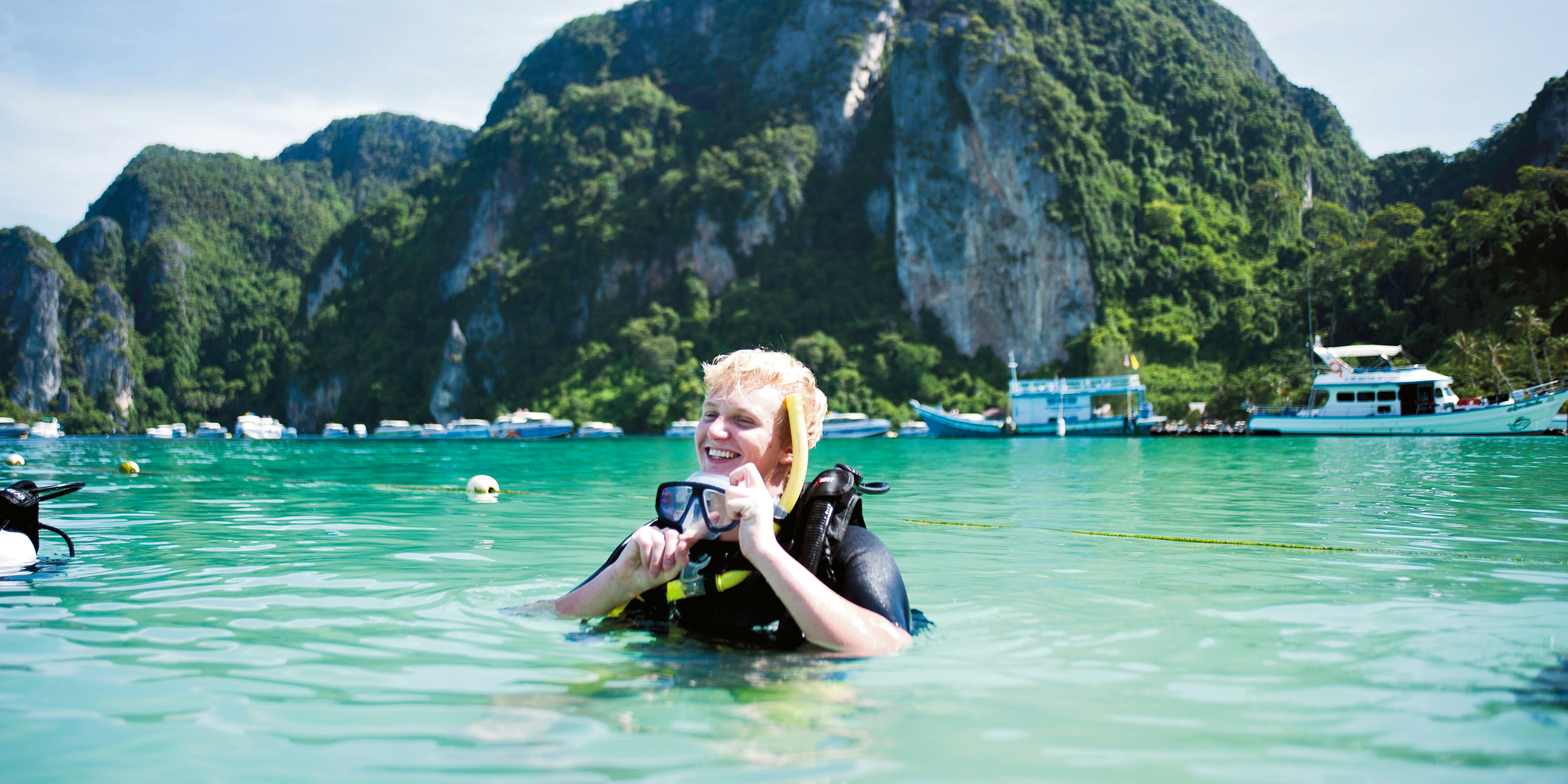- Author:
- Mary Rogelstad
- Published:
- November 16, 2021
- Favorites:
- Tagged In:
- Thailand
The upcoming summer may prove to be the best time for conservation lovers to travel to Thailand. Biologists there have been excited to see the recent reappearance of some vulnerable and endangered species off the coastline. The Marine and Rainforest Conservation program takes students to the spots where some of these uncommon sightings have occurred.
Southeast Asia Regional Manager Keegan Kennedy is working hard to reconnect with locals who will share lessons about these animals with the students. Kennedy has a special place in his heart for this program since he is a science teacher. He says this trip is the one he would pick for students looking for an academic, hands-on program in environmental conservation.

Copyright: © 2016 Rustic Pathways
“Students spend a lot of time on the beach, in two different marine ecosystems, in the mountains, and in local communities. It has a little bit of everything,” Kennedy said.
Environment Lessons By the Andaman Sea
One of the early highlights of the program is a journey to the southern province of Trang to stay in the village of Ban Mot Tanoi, which has been almost untouched by tourism. There students spend time with a host family in the Muslim fishing community, setting crab traps and hopefully heading out on a fishing boat with them.
This region is one of the only places in Thailand where the once-abundant dugongs still make an appearance. This threatened animal that is in the manatee family has suffered from seagrass decline and pollution.
A baby dugong named Miriam became the face of this problem after marine biologists recorded efforts to save her. Despite their care, she died from plastic pollution she ingested. This has ignited efforts to save the dugong population, and now they are making more appearances in this area.
On top of this, students also learn about the importance of mangrove trees in coastal communities. Plus, they explore limestone cave formations and relax on the beach. On the final day in the village, students dress in traditional local attire for a farewell feast by the beach.
“At that moment the students realize that though they’ve had some challenges, they were a part of something special in the village, and they’ll miss their host families,” Kennedy said. “It’s wonderful for them to realize how awesome the trip has been so far and that there are so many things that still lay ahead for them.”
Into the Mountains for an Unforgettable Land Experience
Those next-on-the-agenda activities include a journey north to learn about Thailand’s southern forests and to plant native trees. Afterwards, the students head into the mountains on the Malay Peninsula to visit the breathtaking Khao Sok National Park. There they go tubing and learn about one of the world’s oldest rainforests.

While in this region, students get tips on surviving in the jungle, including how to pick edible plants (skills that could make them waltz through a Survivor competition!) They go on a hike to gather the plants and bamboo for making lunch.
After they get their fill, the students enjoy one absolute trip highlight – washing and swimming with some retired elephants at an elephant retreat.
Alumna Brice Cooper has fond memories of her time with the elephants during her Rustic trip to Thailand. It was one factor that contributed to her decision to major in Environment and Sustainability with a concentration in Wildlife Conservation.

Photo: Brice Cooper
“We learned about the significance that elephants have to the people of Thailand and how vital it is that there are robust conservation efforts to work towards saving them,” Cooper said. “Mo J (the elephant) was gentle and loving, but with that was a strength and power that was magnificent to behold.”
While in the park area, the students also learn about the dam that formed Cheow Lan Lake. They’ll see how the dam works and visit a village that was displaced by the structure. Then it will be time to hit the road again.
Off to the Gulf of Thailand
The students catch a ferry to the island of Koh Phangan in the Gulf of Thailand – the opposite side of the peninsula from where they started. There students will take in a different marine ecosystem and snorkel in one of southeast Asia’s best diving spots.

There are many beautiful places to boat in Thailand. Copyright: Rustic Pathways
Cultural aspects come to life here as students enjoy activities ranging from a Thai massage to fire dance performances. Later the students take a boat ride to search for another marine animal that has recently been making more appearances – the pink dolphin.
In the last two years, these rare creatures have been seen swimming near Koh Phangan. Kennedy says the boat ride is a beautiful end to the trip that showcases the best way for students to learn.
“Out of the classroom, the students learn the most. They need to do more and sit less,” Kennedy said. “I see these kinds of trips as experiential education – a way to transform education to make it much more beneficial. It’s a dream experience to be a part of that.”
Students interested in the environment seem to agree. Our hands-on conservation trips are among the fastest-filling programs offered. To claim one of the remaining spots in this environmental program, please visit our program page.
Mary Rogelstad
Content Writer
Mary is a Content Writer at Rustic Pathways. She has been a writer and editor for nearly 20 years. Prior to covering student travel, Mary created content for the music education company J.W. Pepper & Son. She also was a writer and producer at CNN International and a communications director for a social service agency and a K-12 private school.

